Article Note: This article “9 Important Stages of Mobile App Development Life Cycle” was first published on 5th August 2021. We last updated this article on 13th June 2022 with fresh information.
Ever since mobile apps featured in the first PDAs, their numbers have only increased by leaps and bounds. Apps have almost become a part of our lives. According to the latest estimates, there are approximately 3 million apps that are available in Google Play Store. Daily, there are more than 250 million app downloads.
In today’s world, developing a mobile app isn’t rocket science. According to research, there will be more than 5 billion unique mobile users by the start of 2022. The average number of app users is also increasing by 7-8% every year.
Making an excellent mobile application, on the other hand, necessitates a significant pre-planning procedure.
To construct your mobile application, it may be as simple as running the IDE, putting a few elements together, doing a short round of screening, and publishing it to an App Store, all in half a day’s effort. You can also make it a more involved process that includes Detailed up-front design.
QA testing on various platforms and accessibility testing, an entire beta life cycle, and multiple deployment options. The path you choose gives shape to your vision. With that in mind, let’s look at the mobile app development life cycle.
Some most important mobile app statistics
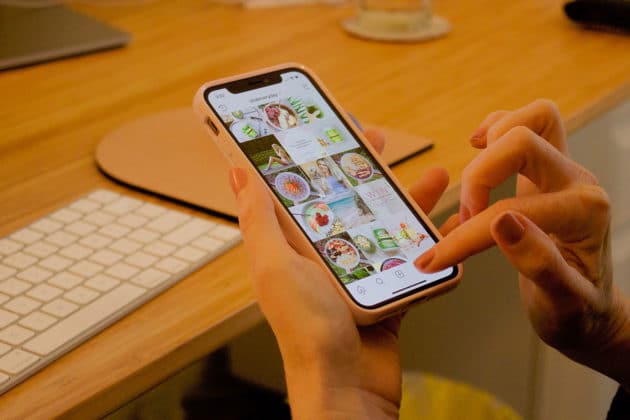
- By 2030, mobile apps are estimated to bring in more than $10 trillion in revenue.
- 1.96 million mobile apps are available for download on the IOS App Store.
- Millennials open applications 70 times or more every day, according to 21% of them.
- Every day, 55% of individuals open an app 13 times or more.
- Mobile apps account for 85% of all digital media time.
- Each day, the average smartphone owner utilizes ten apps, and each month, they use 30 apps.
Factors for businesses to consider
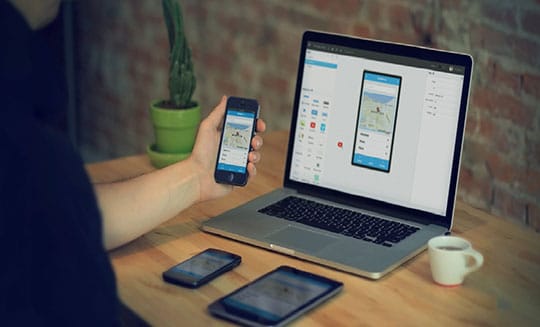
Let’s find out the essential factors for businesses before getting into the apps development process:
Recommended for you: 15 Real Challenges in Mobile Application Development.
1. Conducting market research

Before launching your application, it is generally good to conduct market research. It will assist you in determining your particular requirements. Analyze what your opponents are doing and their strengths and drawbacks. Examine the advice you’ve gotten from clients to determine your target market. You may avoid making the same mistakes if you undertake thorough market research.
2. Choosing an effective architecture

Choosing the correct system is crucial in mobile app development. When deciding between the Android and iOS framework, consider the user interface you want to emphasize in your app. It will have an effect on the flexibility of apps. It would be best to determine which technology enables you to have the greatest impact while simultaneously achieving the best stability and privacy.
3. Determine your audience

Your audience is in charge. You’ve defeated the purpose of having a fantastic program if no one wants to use it. As a result, you must identify your ideal customers. You’ll lose track of what you’re doing if you don’t know your customer, then your app will fail. Understanding your intended audience’s expectations and requirements is crucial for your application’s success. If you cannot persuade your clients’ expectations, you will not contact them again. It is critical to understand your clients’ needs and to align your mobile application goals with their understanding.
“Will your app help save time, digitize a manual process, or fill a specific need of its users. Whether it is a B2B or B2C company, what gap is the app filling, this needs to be your angle. It’s important to not get overestimate capabilities. Think of the objectives of your app and take note of these to review at a later date.” – as explained by Julien Lamy in one of his recent articles. Julien is vastly experienced in software development. He is the founder and CEO of Rocket Lab.
4. Concentrate on the marketing strategy of the App

Nowadays age, when everything is at your fingertips, it is critical to reach out to your customers on time. To attract the curiosity of many consumers, you must create a lot of buzz about your launch. Make absolutely sure you have a strong detailed plan in mind. Because they are knowledgeable about the industry and trends, you may hire a digital marketing business to build awareness for you.
5. UI / UX

Is your app engaging to your intended audience, and how do they feel when they use it? These two critical elements will influence whether your app is effective or not. If the UI & UX of your mobile application does not engage your visitors, it will screw up. Nobody, no matter how tempting, can stop your material from collapsing if your UI, as well as UX, can’t influence your consumers. The reason why the best mobile app development companies spend so much time on user interface and user experience design.
6. User security and privacy

If you are collecting sensitive information from a user, be certain that you have a solid security system in place. If your mobile app is related to fintech or financial mobile applications, security is crucial. You must, however, develop a privacy policy outlining what information you want to gather and how you propose to handle it. Security is a crucial aspect of app development that must be addressed from the beginning. Your visitors’ information is a key asset. It would be beneficial if you could ensure them that it will not be abused and that a reliable and capable mechanism would be put in place to retain and secure it.
Most important stages/phases of mobile app development life cycle
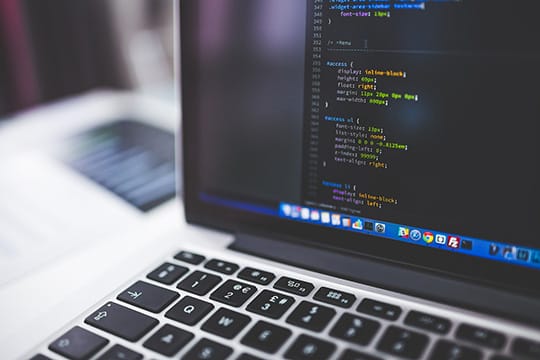
It would be an understatement to say that app development has taken so much prominence in today’s digital world, that it has created a niche market for itself. But before you start to enroll in an app development course, or planning to take a career in app development, there are some things you have to keep in mind. The following 9 steps are, let’s say, stages or phases in the mobile app development life cycle, that you will come across when developing an app. So here goes:
1. Ideation & discovery phase

You believe you know exactly how to finish your project. Then you meet your developer and are bombarded with a barrage of incomprehensible queries, such as, “How many users with various logging rights should your app have?” What OS do you want it to run on? What kinds of smartphone screens do you want your design to work on?
As a result, you and your developer must go through the research step to translate human language into technical documentation. A well-designed evaluation process should encompass the following steps:
- competitor research.
- mapping of features.
- specification of technical needs.
- costs and deadlines are set.
Ideation
An idea is a force behind everything. Everything begins with an idea, and so are apps. An idea is a seed from which the foundations of an app are built. Ideas are supported by in-depth research and planning. You must ask yourself some fundamental questions because it will build the very base of the app. Questions such as the ones below are generally the ones that you should be asking yourself.
- What is the main function of this app?
- Why should the user download this app?
- What solutions will this app be able to provide to the end-user?
Research
This stage of formation of ideas and discovery involves research also. You should not only concentrate on your own ideas but evaluate the products offered by your competitors.
- Are they offering a better solution?
- Are they more feasible?
- Is your app better than theirs?
- Are they paid or free to use?
A careful evaluation will provide you with a deep insight and open up several other aspects of app development that you overlooked. It will give you some insight into the ROI (Return on Investment), budget, resources, and funds that will be used in implementing the app, etc.
2. Initial designing

It’s time to give your web project a unique appearance. The designers work in three different processes to make your app stand out.
After you have decided on the app that you want to develop, and done all the primary research, the next stage is to shape the first visuals of the app. You can do some sketching of what the app will look like, or identify the key features of this app. You can create a storyboard, or a workflow chart, as it will give a visual picture of your app. This is the stage where the key functions of the app begin to appear in greater detail, and all your mobile app ideas take the shape of a visual. You begin to visualize clearly aspects of the app like:
- Various screens will come when the user clicks on a button.
- Which design elements to incorporate in your app.
- What functions/buttons/content should be on the home page of the app.
- Navigation buttons, text, and pages to design in the app.
- Backend and frontend processes of the app.
You will have to create a rough manual of this app, and perhaps take the help of a technical writer at this stage. It will give you an insight into the functionality of your app, or you will come to know of possible loopholes, gaps, or errors that you may have overlooked. Documenting the various aspects of the app you are developing will help not only you but also create a wireframe of the final app, as it would appear on the mobile.
Sketch
Sketching is the initial step. The designers are preparing the app’s concept at this point. Paper is a great program to utilize if you need to draw. It not only looks like an actual paper sketch, but it also allows you to convert your paper draught to a digital format with ease. Check out our list of the best business applications, including prototyping tools.
Wireframe
In the next phase, the app will be licensed and wireframed. While time is not in your favor at this point, drawing out comprehensive designs of the proposed product might help you spot usability concerns.
Sketching is considerably more than simply recording movement. It has the potential to be a powerful tool for collaboration and participation. After you’ve completed your sketches, wireframing will help you develop your ideas and appropriately organize all of the design’s aspects.
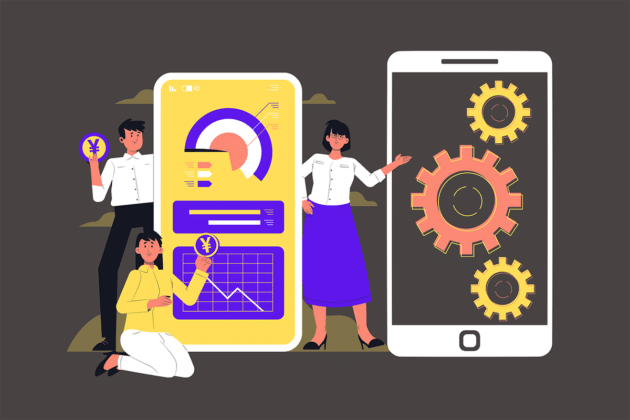
You can solve any technical challenges in the context of back-end development at this phase. Consider how a functional app may include the offered designs and ideas. You may also design a roadmap or a template to show the link between each screen and how users can traverse the program. Look for methods to include the brand, prioritize the user experience, and evaluate how people use a mobile phone app and a mobile browser differently.
Prototype
It is the final stage of the design stage. A prototype is a visual depiction of an app that is the same as the real thing. However, the back-end is currently under construction and so unusable. You may have already shown your prototype to prospective clients or sponsors.
You may like: How to Test, Evaluate, and Improve the Quality of Your Mobile Application?
3. Initial development

The design is accomplished, but more work is still done to turn a model into a completely functional product. The next phase of app development is to start on the actual development of the app. It is when the programmers enter and code all of the necessary features.
During this phase, you shape your prototypes to create the actual app. Your team of software professionals should involve all the working prototypes, the functionality of the app, sketches, storyboards, and workflow charts into consideration in designing the app.
The development process is split into two segments. It usually involves Frontend Designs and Backend Integration. Frontend design should be connected to backend processes where data is gathered, and stored, and how is it processed should be the main thing to do at this stage. Broadly it involves:
Frontend development
A front-end developer’s job is to ensure that the user experience is as smooth as possible. They need to:
- Develop app screens.
- Clickable buttons.
- Navigation pages.
- Integration with backend processes.
Backend development
The complex, functional component ensures the overall system’s functionality. The phrase “back-end” generally relates to the server-side of an application. It’s in charge of all operations, calculations, and, lastly, the app’s dependability. The programmers work on the initial version, often known as the MVP (Minimum Valuable Product). It involves:
- Data storage & retrieval.
- Backend server & database management.
4. Initial testing

Testing of the app usually goes hand in hand with app development. Bugs and errors are identified and corrected at this stage. The app goes through several tests and quality assurance guidelines. The feasibility of the app is worked out and it is determined whether the app is feasible or not.
It’s a beautiful technique to monitor mobile app progress early and often, and it’ll help you save money in the long run. The more you progress through the growth cycle, the more costly it is to fix errors.
Application testing is broad; make sure your team covers all of the necessary features. The usability, functionality, security, interface testing, stress, and performance of the program should all be evaluated. During user acceptability testing, you may evaluate if your mobile app works with your target users.
To test this, show your app to select people of your target demographic and ask them particular questions. After your app meets the user acceptance test, you’ll understand your technique “works.” You’ll be ready to launch a beta test, either through the registration of pre-existing groups or an open call for participation. The feedback from beta users will help you determine if the app’s features work correctly in a real-world context.
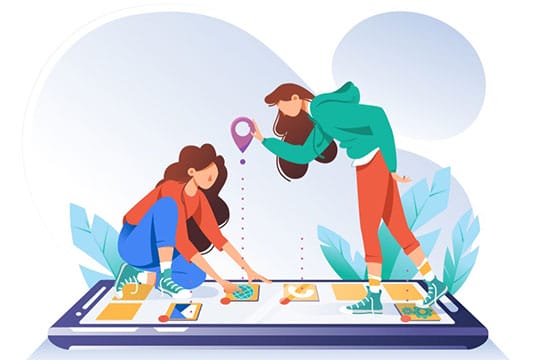
5. Prototype for a touch experience

An app gives a feel of its functionality only when it provides a touch experience to users. A prototype of the app is usually built at this stage, and it is given to users, so that they use it, just as the end consumers would do, and give the necessary feedback. This stage is the first stage where the app design takes shape in the minds of the consumers, and they actually can use the app. Their feedback will help app developers in fine-tuning the app with regards to:
- Interfaces and Platforms.
- Testing on various screen resolutions and sizes.
- Buttons and navigation.
- Privacy of user data.
- App platforms.
- Beta testing.
6. Final coding and design

After you’ve actually tested your app with users, the next stage is to do the actual coding and provide the UX (User Experience) interface of the app. It is at this stage that you will need the services of UX Designers, Coders, Programmers, and Designers to build the app. UX Designer will develop the interfaces of the app, its screens, buttons, links, and other design elements. It will help the app developers get an overall idea about how the app development is taking place. This stage will answer questions like:
- A visual glance at how the app will work
- How will pages interact with each other?
- How fluent is the navigation of the pages?
- Is the layout easy or complex for the user?
It is important to keep the end-user in focus when designing the app interfaces, because the ease of use of the app is of utmost importance for the user, and the interfaces and UX of the app should not be too complex, but make it easy for the user to solve the problem for which the app was built.

7. Final testing of the app

It is always a good idea to test your app after you’ve developed it. Usually, it involves allowing a few target users to test your app themselves. You can then know how others perceive your app, and whether they can use it properly or not. It involves testing an app for its functionality, ease of use, interface design, UX layout, and user experience of utilizing the app. It involves:
- UAT (Use Acceptance Testing): Here, a few target consumers are given the app for testing purposes. In this type of testing, the users get to know the typo errors, flaws in the design, ease of use, security loopholes, layout changes, etc. App developers may ask questions or set a questionnaire or poll about what users feel about the app and its performance.
- Beta Testing: Here, the app is open for all end users, and their testing is of substantial importance. In this testing, the app developers offer a beta version of the app to users. The users provide comprehensive feedback back to developers. The data is then applied to develop the app in light of the feedback received during beta testing.
8. Deployment and publishing

After all the testing is done, your app is now finally approved for final launch. Set a date and begin the official rollout. You can publish the app in online mobile app stores like App Store (Apple Inc.), and Google Play Store (Android).
You will have to follow their guidelines and consent to their terms and conditions before you offer your app in their respective stores. Many app stores accept the prerequisites for publishing an app.
App development does not cease after they are published. When customers use the app, they will provide feedback. You will need to incorporate those feedback into future versions of the product. Any piece of software will require upgrades and the inclusion of new features. When the beta version of the mobile app is published, the development cycle usually resumes. Check that you have the necessary resources to keep your project operating. Aside from the cost of creating a digital presence, keep in mind that this is a long-term investment.
Publishing your app is the culmination of the app development process that you began. It is the penultimate step of app development. You will have to announce a launch date through media campaigns. You will have to employ marketing and advertising teams, plan out social media campaigns, advertise through word of mouth, or launch emails to various people or organizations who took an active interest in your app.
9. Maintenance & updates

However, what is the ultimate end of app development is maintenance and updating the app. You polish the app and improve it by adding advanced features from the project’s backlog. Every self-respecting developer promises technical assistance in any other situation that may arise.
You have to be proactive in this step and align user involvement with regular app updates. Feedback from users has to be applied. The app has to be regularly updated with software features, bug fixes, design implementation, and many other factors. App development then becomes a dynamic process. The true development of an app takes place only after this final step.
You may also like: How to Build a Great Mobile App Development Team?
Final words

The app market is often very competitive; modern entrepreneurs should design their projects, handle the app development process, and maintain the final product with utmost caution. Every error means a loss of customers!
To prevent making mistakes, anticipate the phases in the app development process and be prepared to make them.
Those project concept execution steps require specialists, money, and time, including inception (research), design, development, stabilization, deployment, and maintenance.
- Begin by converting your startup ideas into product tech specifications and concept documentation.
- Then you may start budgeting and keep an eye on your marketing.
- Select an appropriate monetization strategy.
- Before the official release date, plan and start your promotion campaign.
Remember that, app development is not a one-day task. It involves many factors, which have to be envisioned, and put into a workable and functional app, that users can actually download easily, and use in their lives.
The steps of the mobile app development process are only the beginning of your project’s tale. Your product must be adaptable and updated often to compete in today’s mobile app industry.
App development is not as tough as it sounds, and all it takes are a few careful steps and planning.
We have written this article in association with Krunal Panchal. Krunal is the CEO & co-founder of Groovy Web. He has been a hardcore programmer since he was 11 and started his professional career very young. His technical and logical mind drove him to choose coding as his destiny. At an initial stage, he got essential experience and the spirit of innovation and entrepreneurship. Learning something new is a never-ending process for him. Under his leadership, Groovy Web has become an established organization that serves industries from startups to enterprises, regardless of any limitations. You can follow him on LinkedIn.
 We have written this article in association with Krunal Panchal. Krunal is the CEO & co-founder of Groovy Web. He has been a hardcore programmer since he was 11 and started his professional career very young. His technical and logical mind drove him to choose coding as his destiny. At an initial stage, he got essential experience and the spirit of innovation and entrepreneurship. Learning something new is a never-ending process for him. Under his leadership, Groovy Web has become an established organization that serves industries from startups to enterprises, regardless of any limitations. You can follow him on
We have written this article in association with Krunal Panchal. Krunal is the CEO & co-founder of Groovy Web. He has been a hardcore programmer since he was 11 and started his professional career very young. His technical and logical mind drove him to choose coding as his destiny. At an initial stage, he got essential experience and the spirit of innovation and entrepreneurship. Learning something new is a never-ending process for him. Under his leadership, Groovy Web has become an established organization that serves industries from startups to enterprises, regardless of any limitations. You can follow him on 




